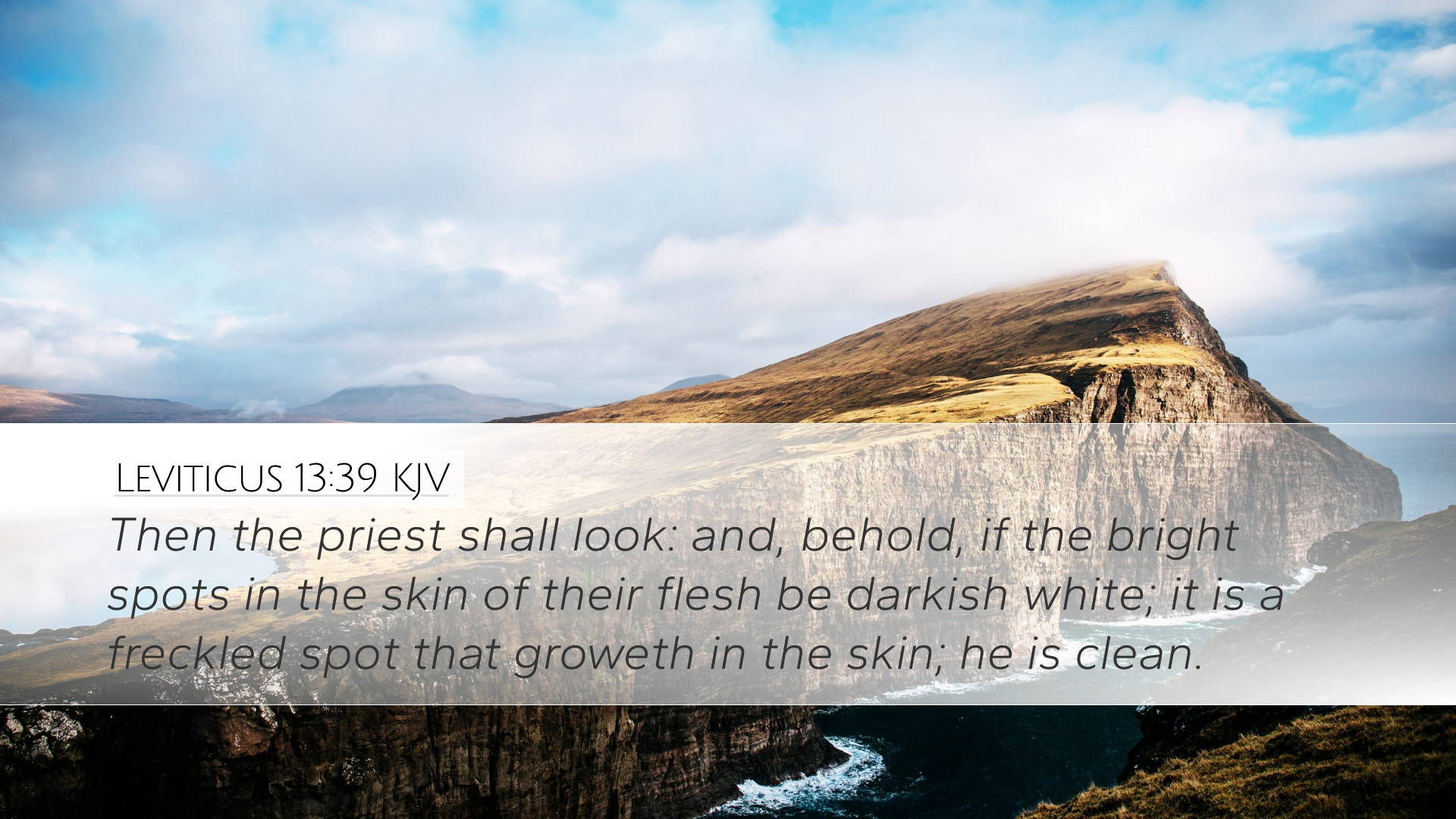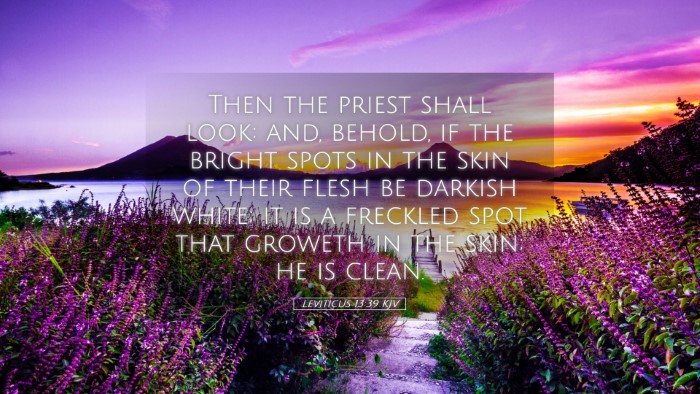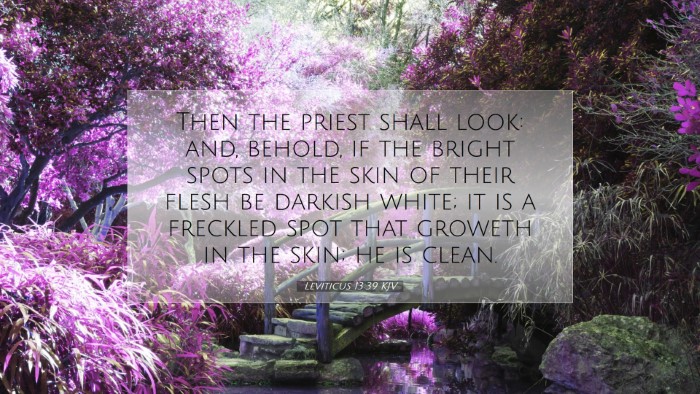Commentary on Leviticus 13:39
Bible Verse: "If a man also or a woman have in the skin of their flesh bright spots, even white bright spots;” (Leviticus 13:39, KJV)
Introduction
The passage in Leviticus 13:39 forms part of the legislation surrounding ceremonial cleanliness and the regulations regarding leprosy and skin diseases. This chapter provides detailed instructions on how the Israelites were to identify and handle various skin conditions, illustrating the importance of purity and holiness in the community of God's people.
Theological Significance
The laws concerning skin diseases transcended mere health concerns; they were intertwined with spiritual and communal dynamics. According to Matthew Henry, "The ceremonial cleanliness signifies the necessity of purity both within and without in the lives of those who would draw close to God." In the context of salvation and redemption, the presence of even slight marks or spots was a reminder of the pervasive nature of sin.
Understanding Bright Spots
Adam Clarke emphasizes that the term “bright spots” may refer not only to superficial conditions but also to underlying spiritual issues. The delineation of “white bright spots” indicates a condition that must not be overlooked. He suggests that spiritual discernment is required to understand the depth of one’s condition before God.
Community Impact
Albert Barnes points out that these laws were intended to protect the community from the spread of disease, both physical and spiritual. Recognizing an individual with bright spots encourages communal vigilance and responsibility. In a wider sense, it teaches that one individual's impurity can impact the entire body of believers, mirroring the New Testament teaching that a little leaven leavens the whole lump (1 Corinthians 5:6).
Exegesis of the Verse
Leviticus 13:39 calls upon the community to recognize and respond to specific signs on the skin, which serves as a metaphor for spiritual conditions. Each symptom detailed in this chapter has both a literal and a figurative significance:
- Physical Inspection: The necessity for examination underscores the importance of accountability in the faith community.
- Spiritual Symbolism: Bright spots can represent unresolved sin or spiritual ailments that require attention.
- Community Oversight: The instruction for individuals to show themselves to a priest demonstrates the role of church leaders in guiding the congregation toward purity.
Role of the Priest
The involvement of the priest as a mediator is crucial. As Clarke notes, "The priest was not merely a healer but a spiritual guide." He exercised judgment based on the observations and guidelines given in the Law, reflecting a profound interaction between faith, community, and health. This role foreshadows the New Testament priesthood of all believers, where spiritual leaders must guide their congregations toward self-examination and communal holiness.
Applications for Modern Believers
The relevance of Leviticus 13:39 extends beyond ancient Israelite culture to contemporary church life. The analogy of “bright spots” manifests in various forms:
- Self-Reflection: Believers are called to examine their lives for unconfessed sins or spiritual malaise.
- Community Accountability: Just as the community dealt with visible signs of illness, modern congregations must confront issues of sin and disunity among members.
- Seeking Restoration: The process of going to spiritual leaders for guidance reflects a need for spiritual counsel and restoration within the church.
Conclusion
Leviticus 13:39 reveals much about the nature of human conditions both physical and spiritual. In understanding the implications of such bright spots, students, scholars, and pastors can draw deeper correlations between the Law and the transformative power of the gospel. The relentless pursuit of holiness demands that God’s people remain vigilant in both personal and communal aspects of their faith, thus embodying the truth that "you shall be holy, for I am holy" (Leviticus 11:44).
This careful examination provides a framework for confronting the dark areas of our lives with hope, healing, and the promise of God’s grace.


